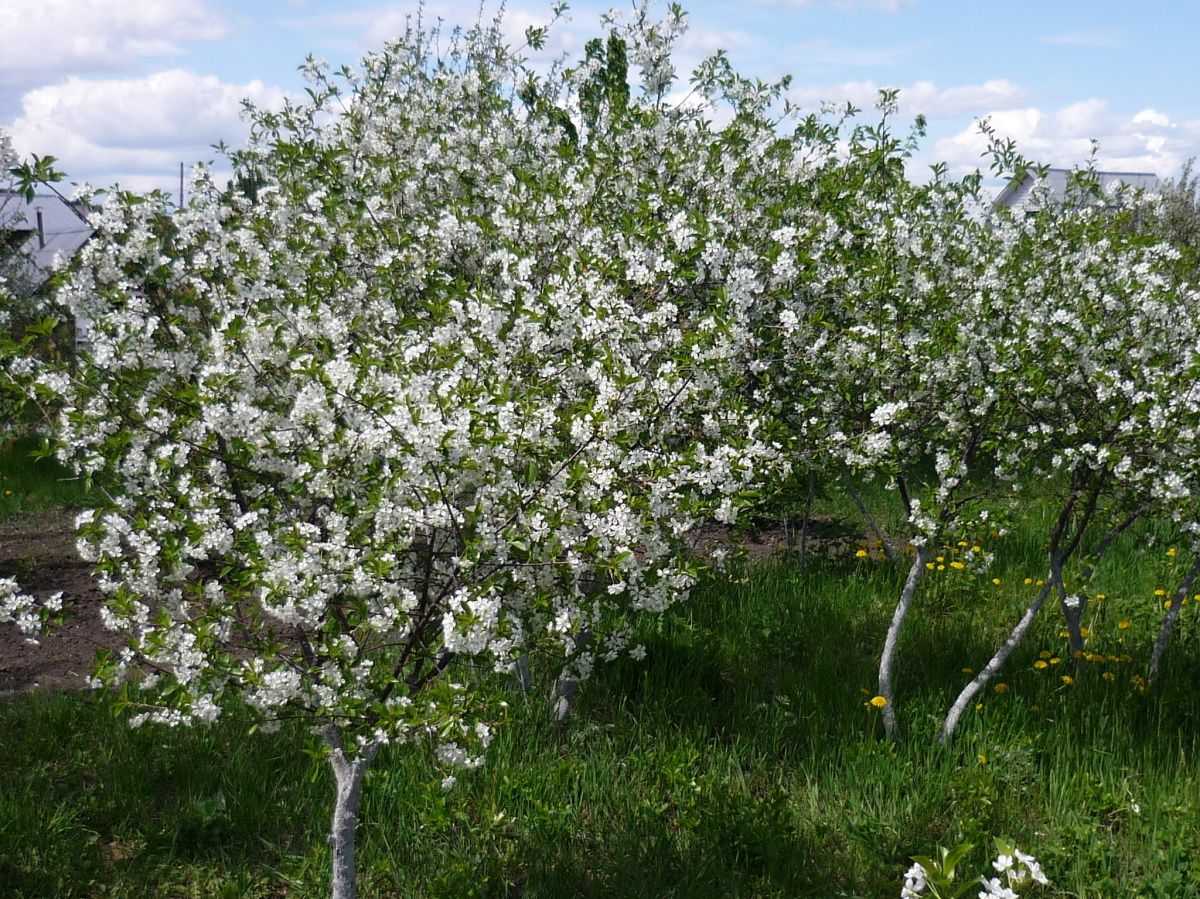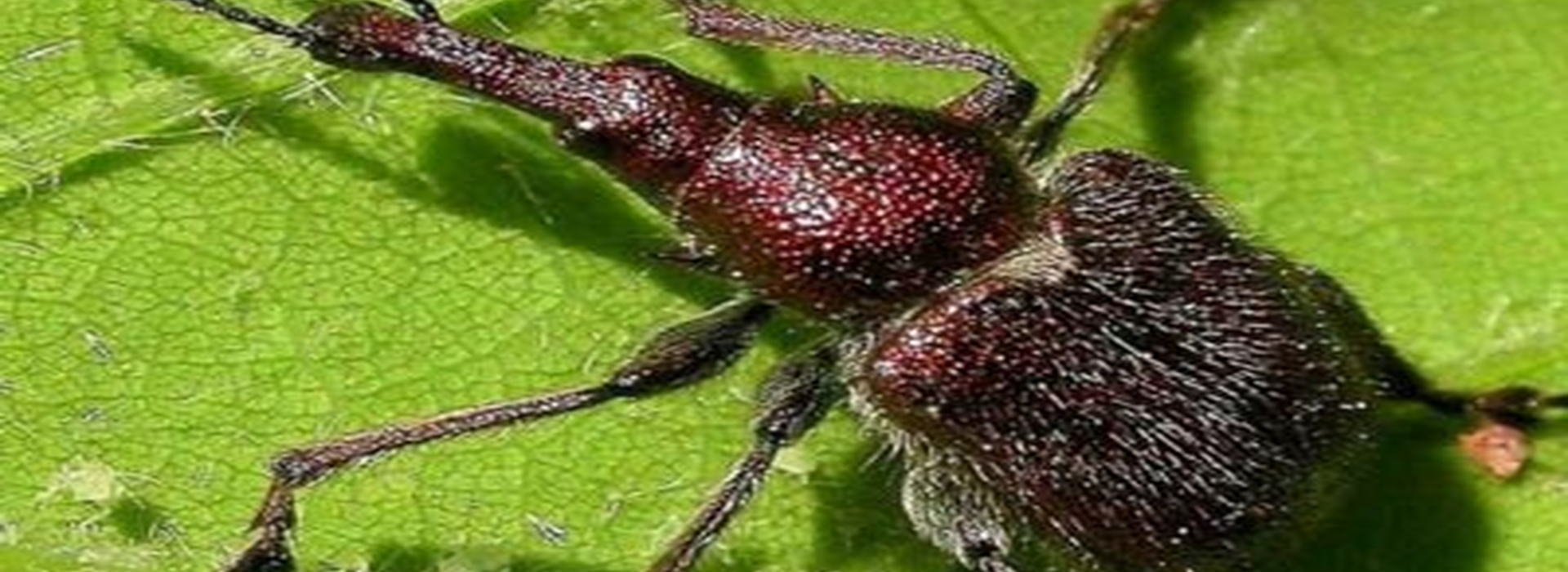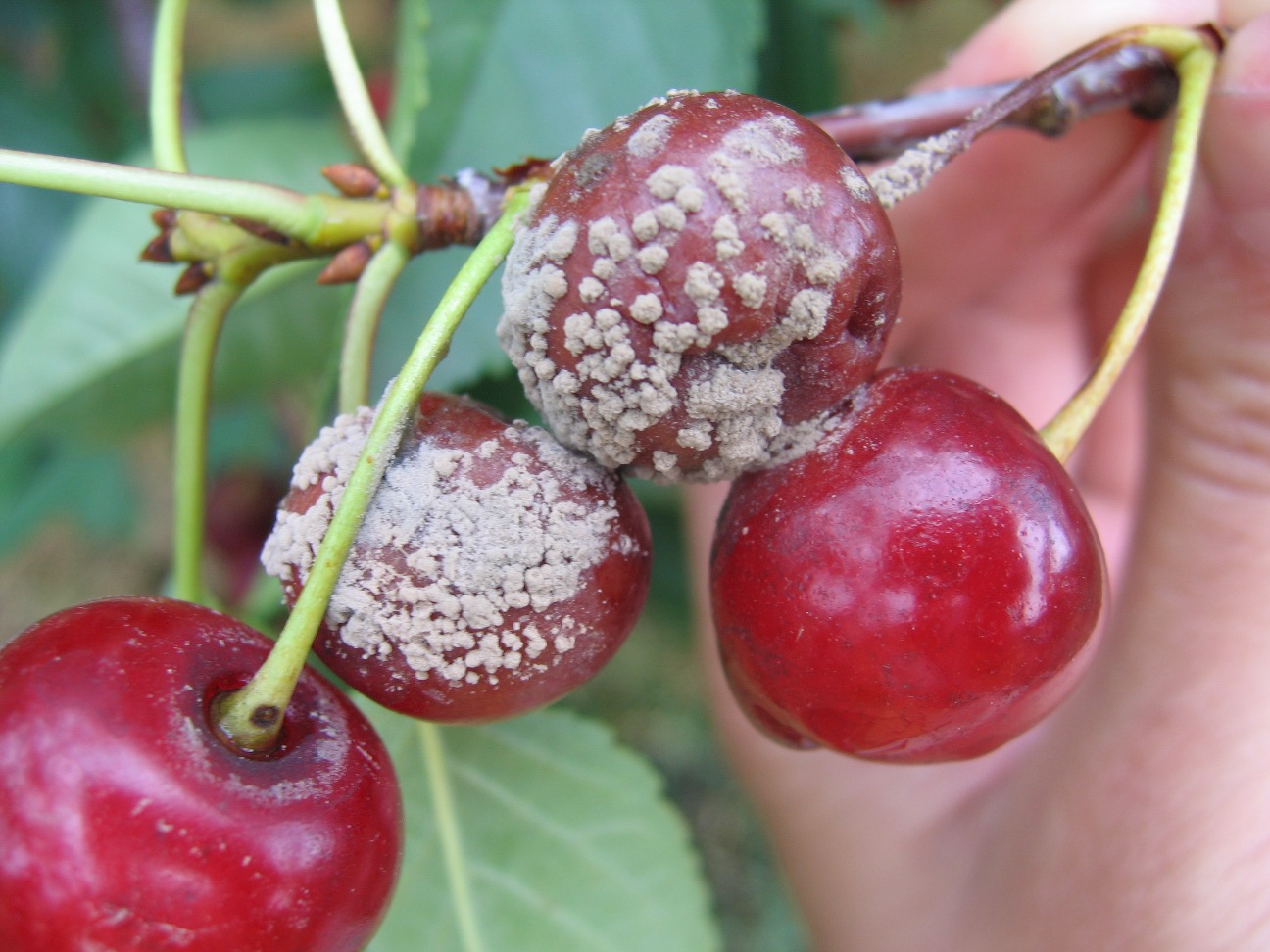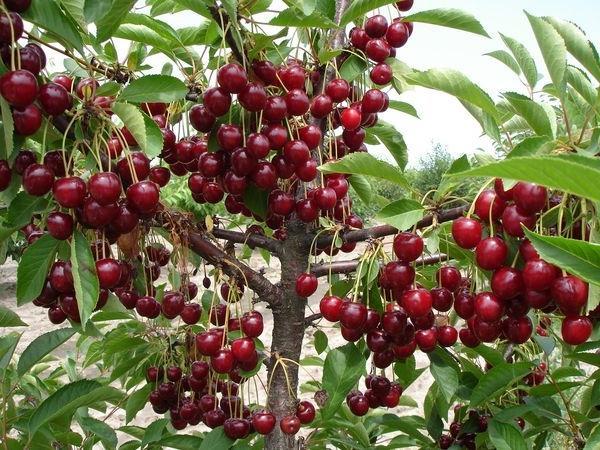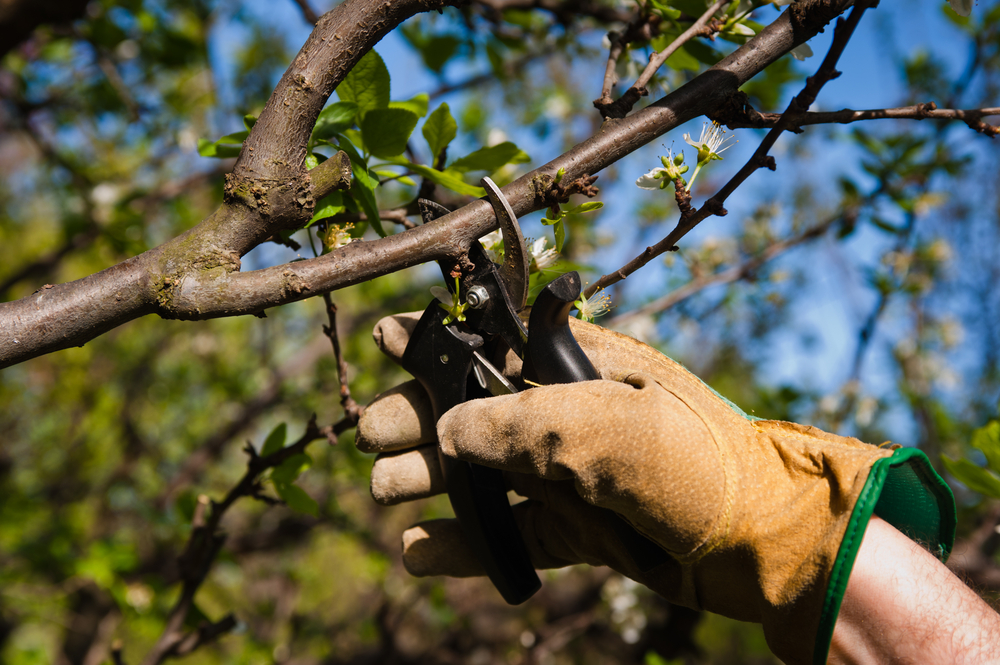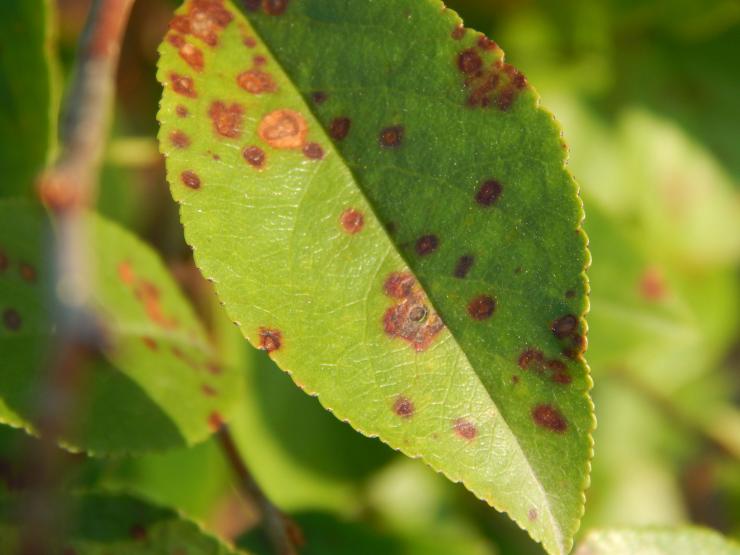Content:
Cherry belongs to a subgenus of Plum plants, the Pink family. The plant is widespread in the North of the USA, Europe and Asia. In our country, this amazing berry appeared long ago. There are already an unprecedented multitude of cultivated plant species. Different varieties of common cherry grow in almost every garden in Russia, and even in plantings along the roads. Cherries can be eaten fresh, made into wines, liqueurs, liqueurs, jams, preserves and compotes. Many people make preparations so that they can then cook delicious dumplings.
Description and overview of popular types of varieties
Cherry is a deciduous tree with a height of 3-4 meters. Leaves are oblong, with serrated, serrated or pointed leaves along the edge, the color is dark green. The foliage is located on the branches in the next order. The pink and white flowers exude a pleasant aroma and form umbrella-shaped inflorescences.
The fruits are dark red or black in color with one seed. The chemical composition is extremely rich, so the berries are recommended for everyone to strengthen the immune system and heal the body.
Cherry is a close relative of other fruit trees - sweet cherry, bird cherry, apricot, plum and sakura
Today, there are more than 150 varieties of cherries. The most common on the territory of Russia is ordinary, it adapts to all environmental conditions, is unpretentious in care, is drought-resistant and frost-resistant. Begins to bear fruit abundantly at 3-4 years of age.
Consider the largest varieties of cherries:
- Miracle cherry - one of the first varieties of large-fruited. The name is quite justified, because under favorable growing conditions, the size of these cherries is 1.5 times the size of sweet cherries. To distinguish it from other varieties simply because of its powerful shoots. Visually, the berries are very reminiscent of cherries, it is possible to determine the fruit only by the test method. Excellent palatability, dark red color. The variety has excellent indicators of frost resistance and disease resistance.
- Toy Is an incredibly valuable and beautiful variety. The tree is characterized by vigorous growth, fruits are large and beautiful. The variety is appreciated due to its high yield rates. There is a high level of resistance to disease and drought. Bears fruit abundantly, subject to all the rules of agricultural technology, for almost a quarter of a century.
- A meeting - a variety with low-growing and bushy trees, the height of the tree can reach 2 meters, the crown is thick and drooping. For the first time, it begins to bear fruit at 3-4 years of age, rapidly increasing volumes. The variety is suitable for dense planting, the plant is frost-resistant and not afraid of drought.
- Night - a hybrid that was obtained by crossing cherry and cherry. As a result, Valery Chkalov received a culture with the characteristic features of a parent - cherry. Begins to bear fruit at 3-4 years of age. A characteristic feature - the leaves are shiny and have a dark green color. The variety bears abundant fruit, is frost-resistant, is not afraid of moisture and has good indicators of disease resistance.
Cherry pests and control
There are enough pests on cherries that love to feast on delicious cherries and cherry leaves. Let's consider the main ones, as well as methods of dealing with them:
- Aphid it does not hit cherries very often, but it can still. Seedlings suffer the most from her attacks.In early spring, many larvae form on the leaves and shoots, which soon form whole colonies of aphids, and flying females will carry them throughout the immediate vicinity. Is it possible to fight aphids on cherries? If larvae are found before bud break and at a temperature of at least 3-5 degrees above zero, the tree should be sprayed with oleocobrite or nitrafen, a little later, before flowering, another treatment will be required, but already with phosphamide, metaphos or karbofos. Throughout the growing season, if necessary, the procedure must be repeated using insecticidal preparations.
- Cherry weevil - these are miniature beetles of golden-red color, their length does not exceed 5 mm. They are dangerous because they feed on young leaves, flowers and plant buds. However, if you do not take the necessary measures, the weevil on the cherry will not disdain and will begin to eat the berries, right down to the seeds themselves. In the middle of the berries, weevils lay eggs, which soon, having turned into bugs, will begin to eat the seed. The affected fruits fall off, and the larvae penetrate from them into the soil layers, where they pupate and wait out the winter. Cherry weevil - methods of struggle: they use special means of chemical protection, as well as folk recipes. Insecticides effectively help from beetles, with which it is necessary to irrigate trunks, trunks and crowns. It should be sprayed in the spring, after flowering and in the fall, if necessary at any time of the growing season.
- Caterpillars on cherries, how to fight and what to do? Most likely, the plant was struck by a goldtail or golden silkworm - these are caterpillars that actively eat the leaves of trees, and after that the remains are wrapped in dense cobwebs and fixed on the branches, where they plan to spend the winter. If you do not take all measures, in the spring they will begin to actively devour cherry buds. The cherry moth and hawthorn may also look like a goldtail. Caterpillars can be harvested by hand or removed by treating the plants with chemicals. What substances to process, the gardener must independently decide. When choosing a chemical, it is very important that it provides an effective and sustainable result and does not harm the quality of the crop.
- Subcortical leafworm Is a butterfly that is active during twilight and at night. The affected areas of the bark can be identified by golden-red corks. These plugs are sticky and glued together with a web of excrement. Here is the answer to the question of gardeners who found a cobweb on a cherry, what it is. Traps should be used to protect cherries and cherries from this pest. The caterpillars that appear cut into the bark, feeding on it. In damaged areas, growths or gum almost always show through. With a high concentration of the pest under the bark, the tree dies within several years. To cure the plant, it is necessary to spray the trunk and stem with fufan or its analogues. The dead layer of bark must be removed and the areas must be treated with a suspension of chalk with an organophosphorus preparation.
- On cherry leaves black larvae, there are black bugs on the cherry, what to do? Agronomists often turn to specialized stores with this question. Most likely it is a kidney mite on a cherry or a spider mite on a cherry. Sucking pests, the length of which does not exceed 0.5 mm, four pairs of legs. Damaged leaves change their color, become light, and stop developing. With a high concentration of insects, leaves begin to fall off en masse, the growth of shoots slows down / stops, which adversely affects the frost resistance of the plant. During the year, about 5 generations of the pest develops; they accumulate, as a rule, in the shaded part of the crown. For the prevention and control of ticks, trees must be sprayed with fufan or its analogues.
Preventive measures
No matter how powerful and effective means to combat insects are used, it will not be possible to achieve a sustainable result without proper preventive measures.
A prerequisite for the prevention of pests and diseases is the irrigation of trees with special compounds. But, alas, this is not enough. The main actions should take place in the fall, and they include:
- Timely and regular pruning of dry, damaged and diseased branches;
- Cracks, cuts and any damage to the integrity of the bark should be treated with soda water;
- The remaining fruits, fallen leaves and branches must be carefully collected and burned;
- The soil near the trees is carefully loosened, and then dug up;
- With the onset of the first cold weather, the entire garden with fruit trees should be sprayed with a solution of urea (5%).
With the onset of spring, it is imperative to check the condition of the bark of trees and their branches, carry out a comprehensive treatment against attacks of pests and the development of diseases. As a rule, formulations with a wide spectrum of action are used.
Repeated spraying is advisable soon after flowering, once in summer and finally in autumn.
Diseases dangerous for cherries
Treatment of diseases can not always give the desired result, it is easier to eliminate the cause provoking the development of the disease. It is worth noting that if pests appear on fruit trees, disease is likely to develop. Cobwebs on cherries, green leaves began to change their color and fall off, scabbard damage, etc. A gardener should pay attention to all these abnormal phenomena, otherwise the probability of being left not only without a crop, but also without trees, increases.
Cherries and cherries can infect many diseases, but consider the main ones:
- Cherry anthracnose - a fungal disease, which in recent years increasingly began to infect fruit trees. The clinical picture of the disease is the formation of spots on the fruits, which soon transform into dark tubercles. With a disease, the berries mummify. The disease is especially dangerous at times of high air humidity, during these periods up to 80-85% of the crop perishes. Prevention - triple treatment of the plant with a polyram solution. The first irrigation is on the eve of flowering, the second is soon after the beginning of flowering, the third is at an interval of 2 weeks with a second spraying.
- Scab cherries are calculated quickly due to biological deviations from the norm, the disease can do a lot of trouble - rotting brown spots, fruit rot are formed on the surface of the berries. Initially, the fruits may be covered with a slight bloom, like a cobweb, then white growths form, which diverge in circles. Infected fruits must be removed immediately and the plant must be irrigated with zircon. In June, July and August, if necessary, the orchard must be re-treated against rot.
Despite the many diseases and pests that can affect cherries, breeders have developed effective formulations that can produce the desired effect. But, in order to obtain a sustainable result, all the rules of preventive measures and agricultural techniques for growing a tree must be observed.
